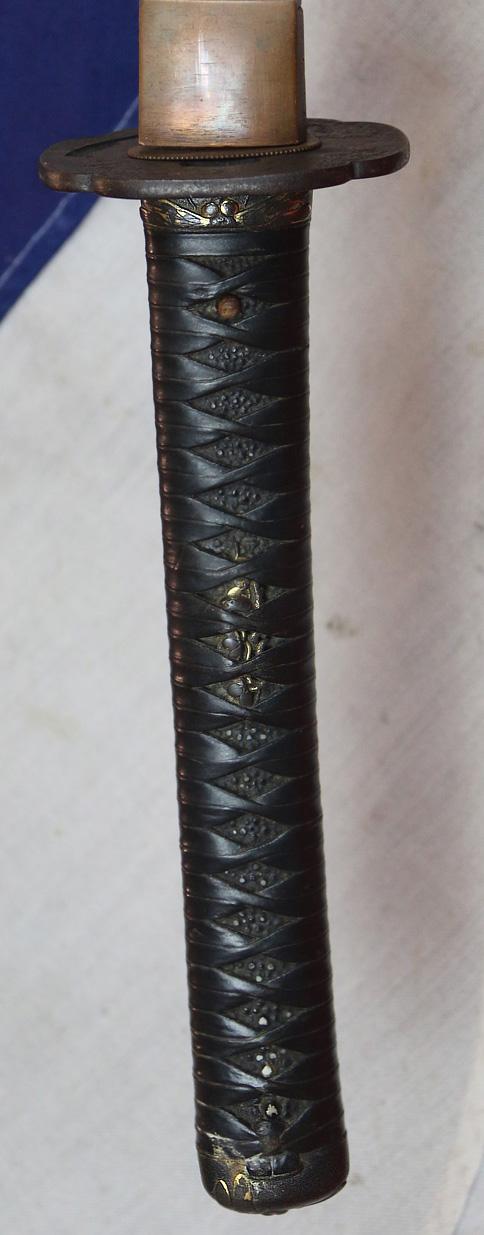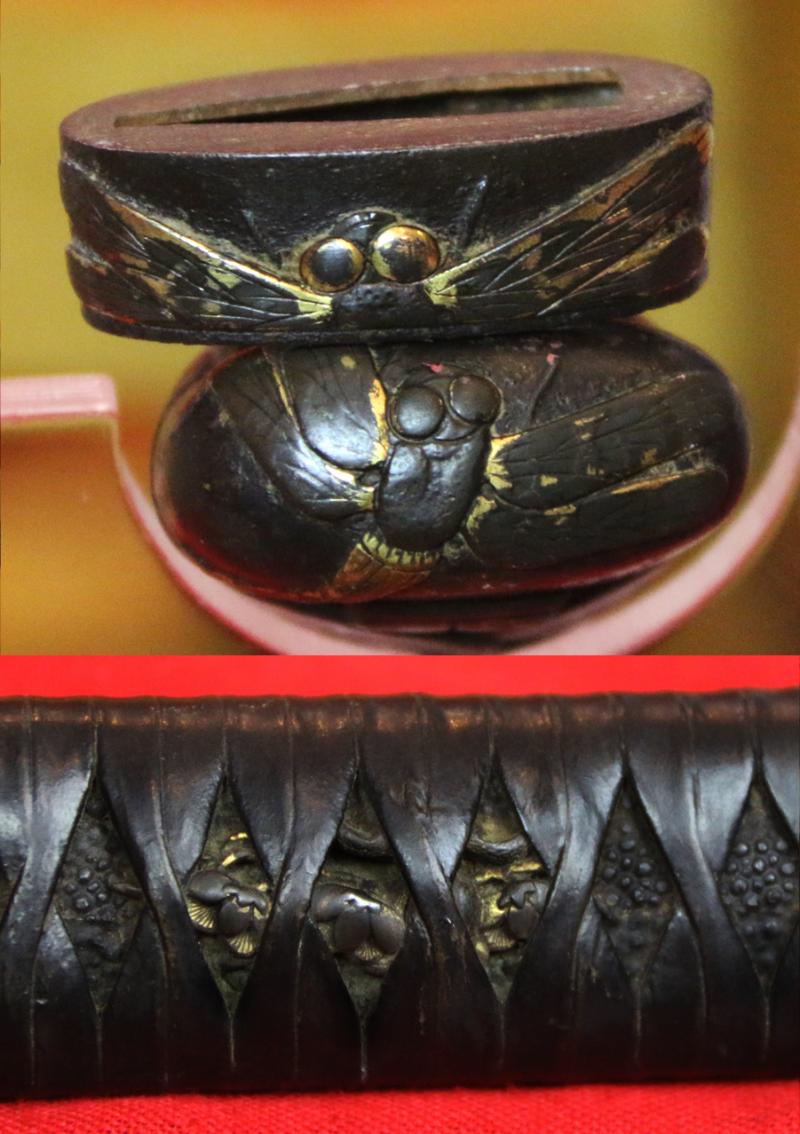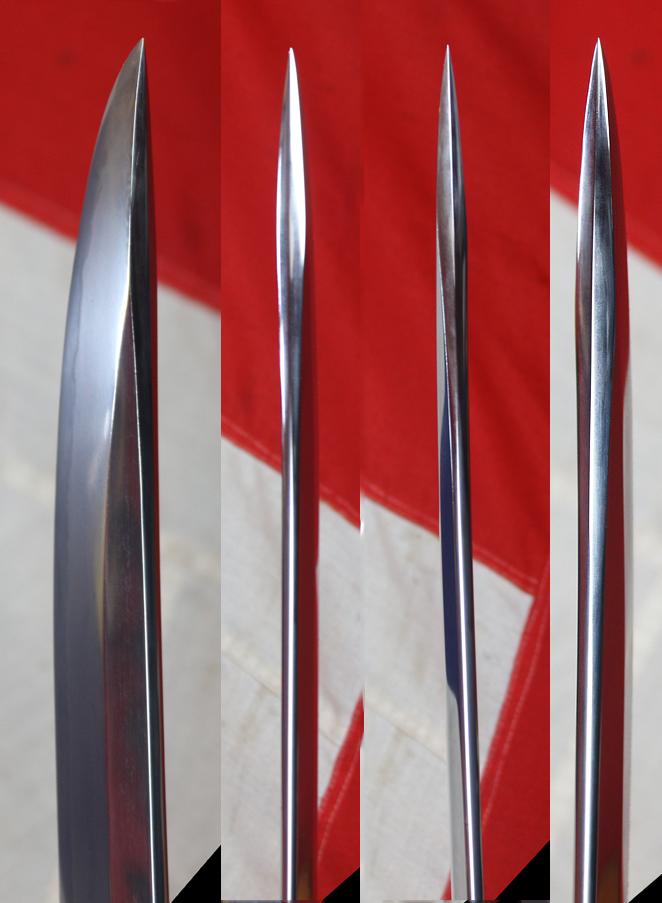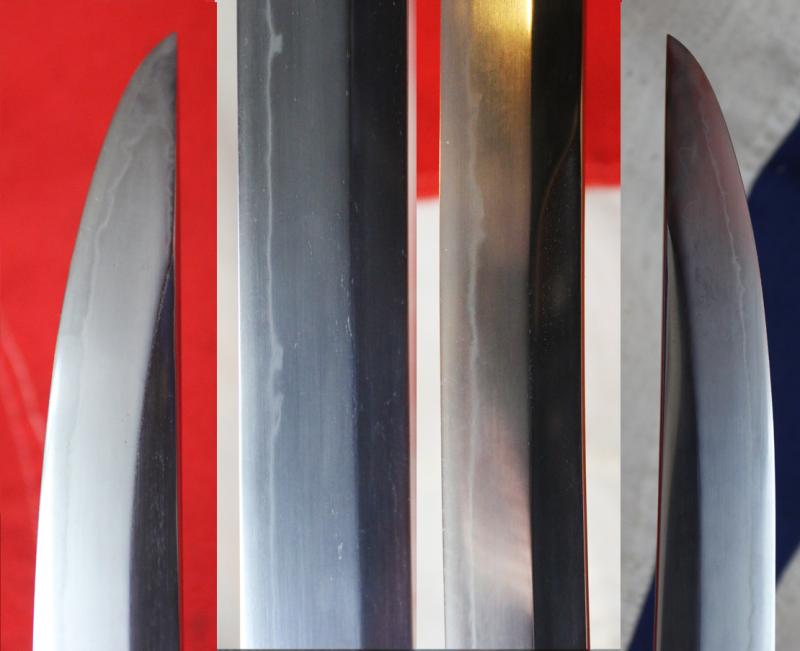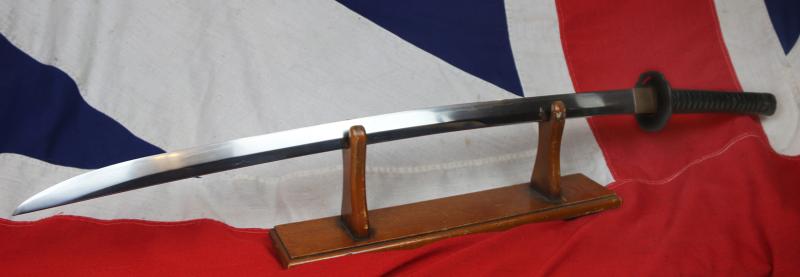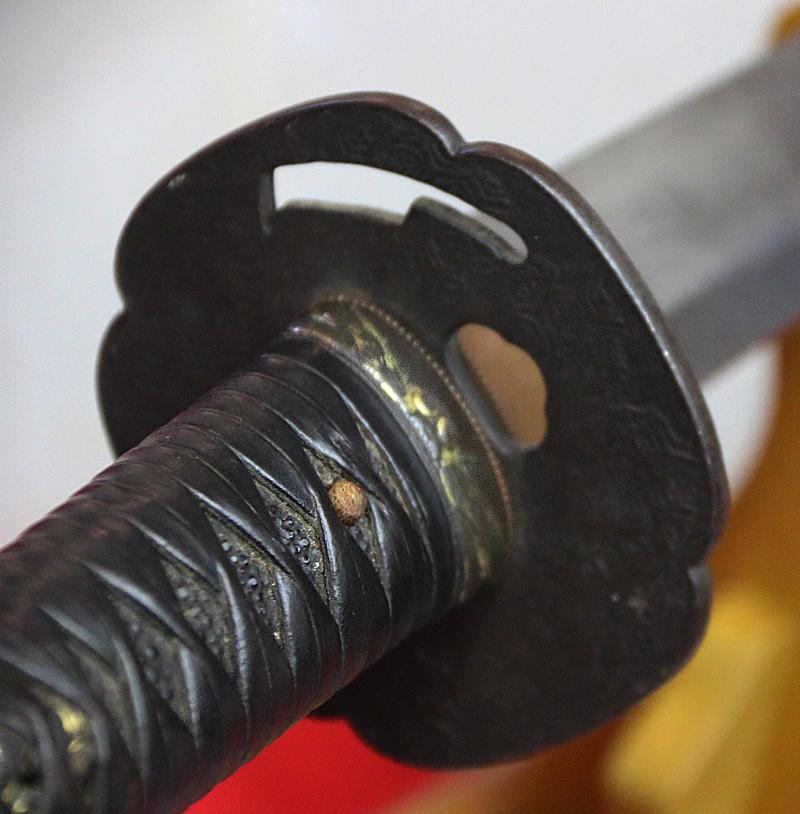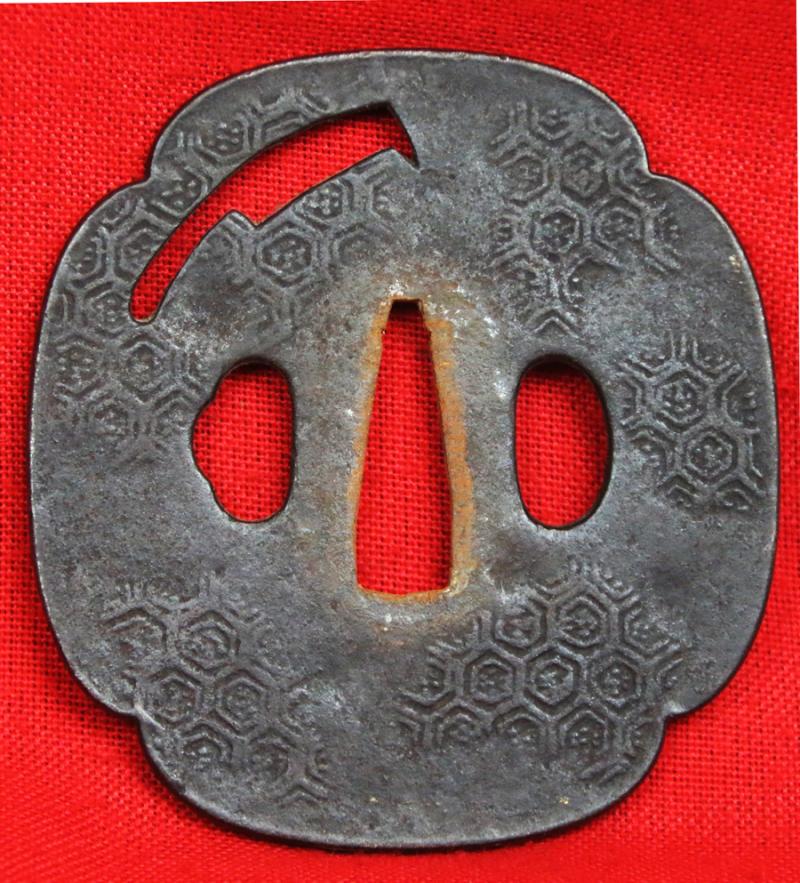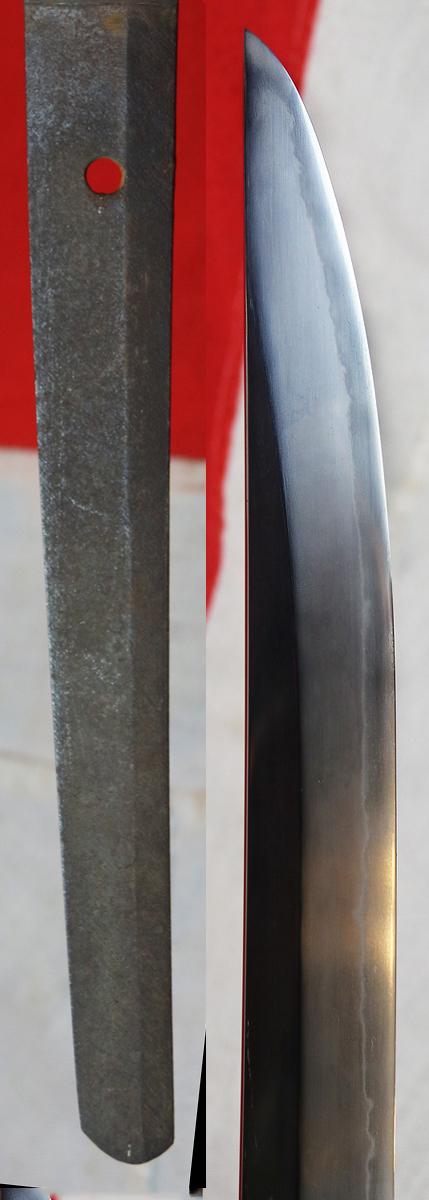A Simply Magnificent & Huge 400 Year Old Nagamaki Naoshi Katana Shinto Period. An Amazingly Impressive & Spectacular Samurai Katana,
One of the most huge and dominating swords from the 1600's we have ever seen, in the incredible nagamaki naoshi form. It has the feel,when held in two hands, that its strength and power could cut through a tree trunk, let alone an armoured samurai.
Made for a fully armoured samurai of high status, a sword that give the samurai horseman great reach in hand to hand combat, yet at the same time immense cutting power.
Overall every part of the sword is in fabulous condition for age, and the incredible blade has a stunning hamon.
This is, without question, a singularly impressive statement piece, that would make an incredible centrepiece of any form of display or decor, whether it be in a private home or the CEO's boardroom, or in a museum. In a well lit setting this would be a breathtaking work of art.
All original Edo koshirae, including a fuchi kashira in tettsu, and pure gold decorated takebori dragonfly of katchimushi. Original edo period black leather tsukaito over black samegawa, and a pair of gold and shakudo menuki of flowering plants. A mokkogata saotome tembo tempo sukashi tsuba, with hot stamp patterning of linked hexagonals, and a sukashi kubukiri head cutter or bonsai pruner.
The 'cormorant's neck' blade form is patterned after the shape of the Nagamaki, the powerful long-handled sword popular between the 12th and 14th centuries. The Unokubi-Zukuri Katana provides excellent balance in a strong cutting blade. The mune (back) of the blade is also different from the more usual form in that it starts out like most katanas, but after a 11 nches of the way down, the mune narrows out rapidly into a long false edge.
Samurai used dragonfly motifs on their armour, clothing and weapons in hope of success in battle.
The urushi lacquer saya is in ishime stone finish pattern.
Japan was once known as the “Land of the Dragonfly”, as the Emperor Jimmu is said to have once climbed a mountain in Nara, and looking out over the land, claimed that his country was shaped like two Akitsu, the ancient name for the winged insects, mating.
Dragonflies appeared in great numbers in 1274 and again in 1281, when Kublai Khan sent his Mongol forces to conquer Japan. Both times the samurai repelled the attackers, with the aid of huge typhoons, later titled Kamikaze (the Divine Winds), that welled up, destroying the Mongol ships, saving Japan from invasion. For that reason, dragonflies were seen as bringers of divine victory.
Dragonflies never retreat, they will stop, but will always advance, which was seen as an ideal of the samurai. Further, although the modern Japanese word for dragonfly is Tombo, the old (Pre Meiji era) word for dragonfly was Katchimushi. “Katchi” means “To win”, hence dragonflies were seen as auspicious by the samurai.
Insects in general have been celebrated in Japanese culture for centuries. The Lady Who Loved Insects is a classic story of a caterpillar-collecting lady of the 12th century court; the Tamamushi, or Jewel Beetle Shrine, is a seventh century miniature temple, once shingled with 9,000 iridescent beetle forewings. In old Japanese literature, poems upon insects are to be found by thousands, Daisaburo Okumoto is director of the Fabre Insect Museum. An avid insect collector and a scholar of French literature, he has translated many of Fabre's works. He ascribes the popularity of insects in Japan to national character. It seems like Japanese eyes are like macro lenses and Western eyes are wide-angle, he says. A garden in Versailles, it's very wide and symmetrical. But Japanese gardens are continuous from the room and also very small. We feel calm when we look at small things. The medieval Japanese monk Yoshida Kenko put it this way: “If man were never to fade away like the dews of Adashino, never to vanish like the smoke over Toribeyama, how things would lose their power to move us!
The Saotome were a well known school of armour makers (katchushi) originating in the late Muromachi Period and working well into the late Edo Period. They also made many variety of tsuba (Note: some scholars feel the Saotome tsuba makers branched off from the armor makers, possibly in the early Edo Period). Many of the Saotome tsuba are of the kiku and kiku sukashi styles (see daisho tsuba for examples). They also did sukashi tsuba with various designs including mushrooms, clouds and those with somewhat abstract sukashi. Their plates are well forged, mostly folded plates in katchushi style commonly with uchikaeshi mimi (raised and/or folded rims). Ten zogan (brass or silver dot inlays) are also seen as are acid relief designs of fans, dragons and Buddhist symbols similar to the technique used by the Hoan School. Other schools of tsuba makers used Saotome plates as the basis of their works, including Nara and Shoami. The Saotome kiku sukashi plate was the used as the starting point for weaving brass and copper wire to form the Shingen style tsuba. The Saotome also originated the use of kokuin (hot stamps) on their plates, the so called tembo style. The Saotome kokuin technique was also used by the Hoan, Heianjo, Shoami and Tembo schools and possibly others as well.
The first master of the Saotome school was Nobuyasu of Shimotsuke. Nobuyasu moved to Odawara in Sagami were the Saotome school itself was founded. Some of the early Saotome makers were Nobuyasu, Iyenori, Iyetsugu, Iyetada and Iyesada although there is some disagreement on the lineage of the school. There were many other generations working well into the late Edo period. The Saotome School gave rise to the Tembo School of tsubako.
The Tembo School (also spelled Tempo, Tenpo or Tenbo) also worked well into the Edo Period. They are most noted for the use of kokuin (hot stamps) on their plates, although not all Tembo School tsuba are of the hot stamped style. Tembo School plates, to my eye, are not as well forged as those of the Saotome School. Saotome and Tembo tsuba are also often found with brass encrustation (see below) or gomoku zogan (see daisho tsuba for examples). It is often difficult to distinguish between Saotome tembo tsuba and Tembo School tsuba. It is not uncommon to see them all simply referred to as Saotome Tembo tsuba. Signed tsuba of the Saotome or Tembo schools are known, but are somewhat rare. Known signatures of Saotome makers include: Shimotsuke ju Saotome Nobuyasu, Saotome Iesada, Joshu ju Saotome Iyenori. Some known Tembo School mei are: Tembo, Yamashiro ju Tembo, Sanada Tembo and variations of those.
Blade 1.5 inches wide at the habaki, 30.5 inches long from the tsuba to tip. Weight 1.7 kilos.
Code: 24360
8595.00 GBP


